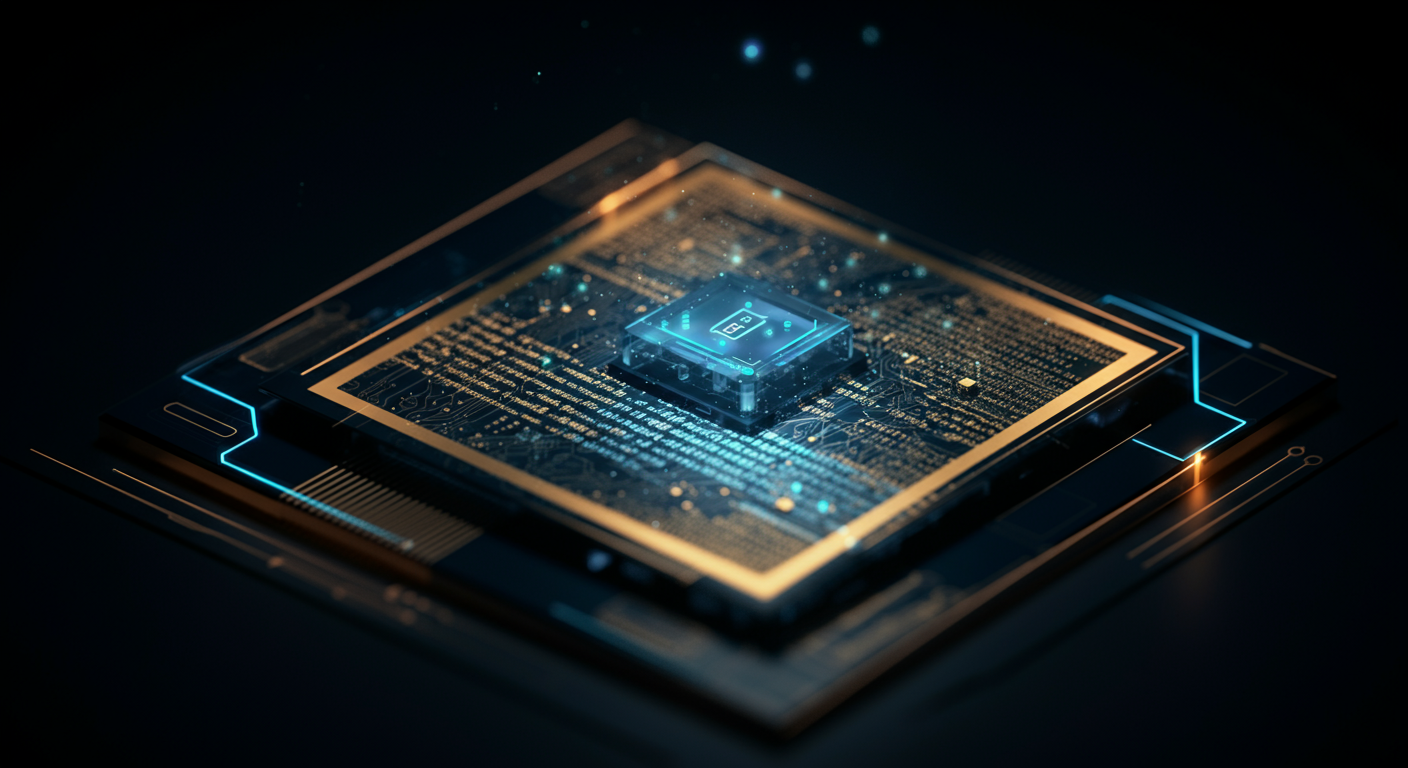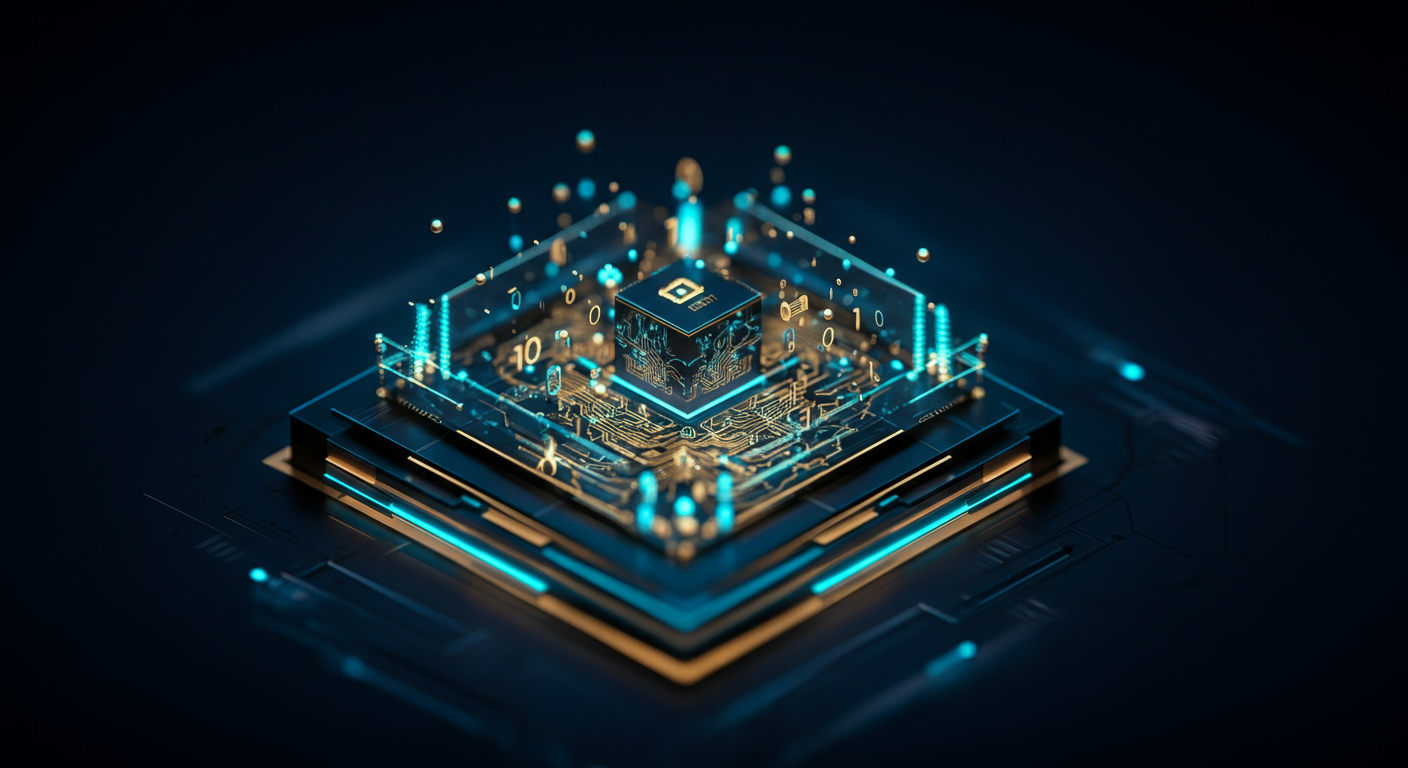AI Drones: From Defense Innovation to Ethical Dilemmas and Societal Transformation
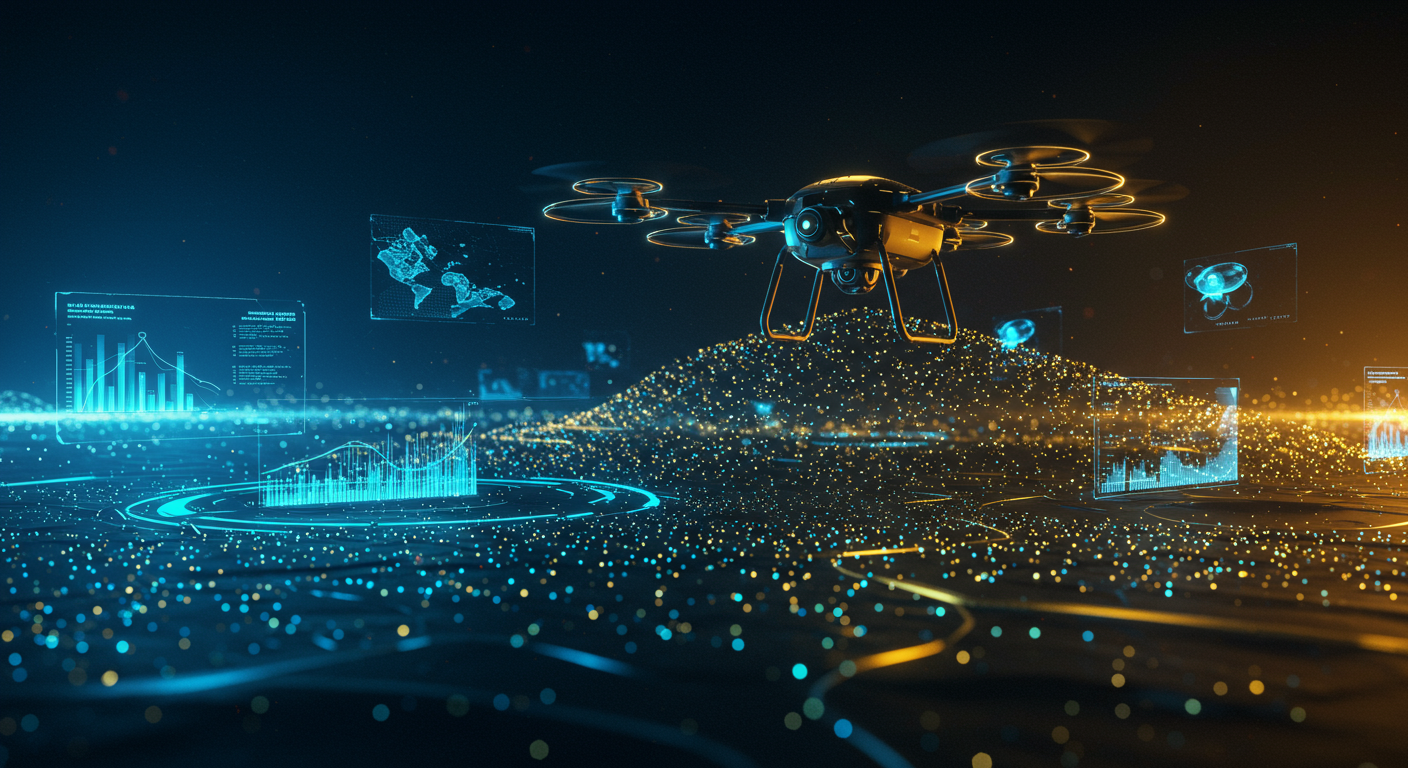
Here comes the AI revolution in defense, and it's not just about autonomous weapons.
The Rise of the Drone Brothers: How Anduril is Reshaping Defense with AI
Anduril Industries is not your grandfather's defense contractor. Founded by Palmer Luckey (of Oculus fame) and a team of tech-savvy entrepreneurs, Anduril is reimagining defense through AI-powered systems. They're building a future where technology provides a strategic advantage, and frankly, it’s about time.
An Unconventional Approach to Defense
Instead of focusing solely on traditional weapons, Anduril emphasizes software, AI, and autonomous systems. They aren't just bolting AI onto existing platforms. Anduril designs from the ground up with AI at its core.
Think of it as transitioning from horse-drawn carriages to self-driving cars – a complete paradigm shift.
Key Products: Beyond the Predator
Anduril's product suite includes:
- Lattice OS: A command and control software platform that integrates various sensors and systems, providing a comprehensive operational picture.
- Ghost: A stealthy, autonomous drone platform ideal for reconnaissance and surveillance.
- Sentry Towers: AI-powered perimeter security systems for detecting and deterring intrusions.
- Dive: Anduril Dive is a software platform providing a full suite of capabilities for mission planning, execution, and analysis, specifically for submarine forces.
Partnerships and Innovation
Anduril Industries defense contracts extend to collaborations with U.S. Customs and Border Protection and the Department of Defense. Their agility and cutting-edge approach stand in stark contrast to the often slow and bureaucratic processes of traditional defense contractors. This speed to market has positioned them as a serious player.
Dispelling Misconceptions
Some worry about "killer robots," but Anduril focuses on using AI to enhance human decision-making, not replace it. The goal is to provide operators with better information, faster reaction times, and increased safety.
Anduril is not just building tools; they're building a future.
AI drones are no longer science fiction; they're rapidly reshaping our world, one autonomous flight at a time.
Beyond the Battlefield: Exploring the Civilian Applications of AI Drone Technology
While often associated with military operations, AI-powered drones are increasingly demonstrating their value in a diverse range of civilian applications, promising to revolutionize industries and improve our daily lives. Let's explore where these winged wonders are taking flight.
Transforming Key Industries
- Agriculture: Drones equipped with AI can analyze crop health, optimize irrigation, and even precisely spray pesticides, maximizing yields and minimizing environmental impact. PlntNet is an AI tool that uses image recognition to identify plants, which can be extremely helpful for drone-based agricultural analysis.
- Infrastructure Inspection: Forget perilous climbs! AI drones are being used to inspect bridges, power lines, and other critical infrastructure, identifying potential problems before they escalate. This makes AI drones for infrastructure inspection safer, faster, and more cost-effective.
- Disaster Relief: In the wake of natural disasters, AI drones can quickly assess damage, locate survivors, and deliver essential supplies to remote areas, offering a lifeline when every second counts.
Ethical Considerations
"With great power comes great responsibility," and AI drones are no exception; privacy, surveillance, and data security are crucial concerns that must be addressed. Regulations and ethical guidelines are still evolving, playing catch-up with rapid technological advancements. The Guide to Finding the Best AI Tool Directory can help find AI tools for ethical oversight.
Real-World Examples
| Company | Application |
|---|---|
| Skydio | Autonomous flight and obstacle avoidance |
| PrecisionHawk | Data analytics for agriculture and infrastructure |
| Zipline | Medical supply delivery to remote areas |
The Future is Now
AI drones are poised to become even more integral to our lives, and the Software Developer Tools needed to manage them are becoming more sophisticated. As the technology matures and regulations become clearer, expect to see these versatile machines taking on even more tasks, improving efficiency, safety, and sustainability across a wide range of industries. The possibilities are as vast as the sky itself!The fear of AI "doomerism" – the belief that AI will inevitably lead to our demise – can actually be a powerful catalyst for proactive ethical considerations of autonomous weapons.
Defining the "Doomer" Premise
AI "doomerism" centers on the idea that unchecked AI development, particularly in areas like autonomous weapons, poses an existential threat. Core arguments include:- Autonomous weapons systems (AWS) could escalate conflicts uncontrollably.
- Lack of human oversight may lead to unintended targets and civilian casualties.
- These systems are susceptible to hacking and misuse by malicious actors.
Balancing Risks and Benefits
While the risks are real, dismissing AI's potential benefits in warfare would be a mistake. AI could potentially:- Reduce human casualties by taking soldiers out of harm's way.
- Make more precise decisions, minimizing collateral damage.
- Enhance strategic planning and resource allocation.
The Crucial Role of Ethical Guidelines
The key to navigating this ethical minefield lies in robust guidelines and regulations. This means:- International cooperation to establish clear rules on AI in warfare.
- Developing ethical frameworks that prioritize human control and accountability. Centre for the Governance of AI analyzes the impacts of advanced AI and develops policy to ensure it benefits humanity.
- Implementing stringent testing and validation procedures for AI drone Software Developer Tools.
Ensuring Accountability
The challenge of accountability in autonomous weapons systems is substantial. How do we assign blame when an AI makes a lethal mistake? We need legal frameworks that address this directly, including mechanisms for:- Identifying the responsible party (programmer, manufacturer, commander).
- Providing remedies for victims of AI-related harm.
Safeguarding Tomorrow: AI Safety Protocols and the Future of Drone Regulation
AI drones are no longer the stuff of science fiction; they're here, and figuring out how to manage them safely and ethically is paramount.
The Regulatory Landscape: A Patchwork Quilt
Right now, AI drone regulation in the US, and internationally, is a bit like a patchwork quilt – some areas are covered well, others are threadbare. We're seeing regulations slowly emerge, often focused on basic drone operation like altitude and proximity to airports, but AI-specific concerns are still largely unaddressed.Why Standardized Safety Protocols Are a Must
Imagine a world where every AI drone manufacturer uses different safety standards – chaos, right? We need standardized testing and safety protocols.- Autonomous Flight Testing: Must be able to handle unexpected weather events and complete the objective without incident.
- Fail-Safe Mechanisms: What happens when the AI malfunctions? A pre-programmed landing sequence?
Enhancing Drone Safety with AI
Ironically, AI can also improve drone safety. Think of collision avoidance systems powered by sophisticated AI algorithms. Browse AI can be helpful in monitoring regulations to ensure drone operation is done correctly. This tool is an AI-powered web scraping and automation tool that extracts and monitors data from websites. By using AI to enhance drone safety, drones can be made more compliant to laws and regulations.Transparency and Explainability: No More Black Boxes
We need to understand why an AI drone made a certain decision.- Explainable AI (XAI): Crucial for accountability and identifying potential biases.
- Auditable Logs: Detailed records of drone activity for incident investigation.
Protecting Drones from Cyberattacks
Drones are essentially flying computers, which means they're vulnerable to hacking. AI powered cybersecurity for drones can proactively detect and respond to threats in real-time. Imagine AI firewalls defending against malicious intrusions.Regulation in the Age of Rapid Innovation
Technology evolves faster than bureaucracy. We need regulatory frameworks that are agile and adaptable. Scenario-based regulations and AI ethics boards are potential models.Ultimately, the future of AI drones hinges on responsible development and proactive regulation, not to hinder, but to harness the positive capabilities AI drones have to offer.
AI drones are more than just flying robots; they’re a fascinating lens through which to view the entire AI drone technology future trends.
Synergistic Advancements
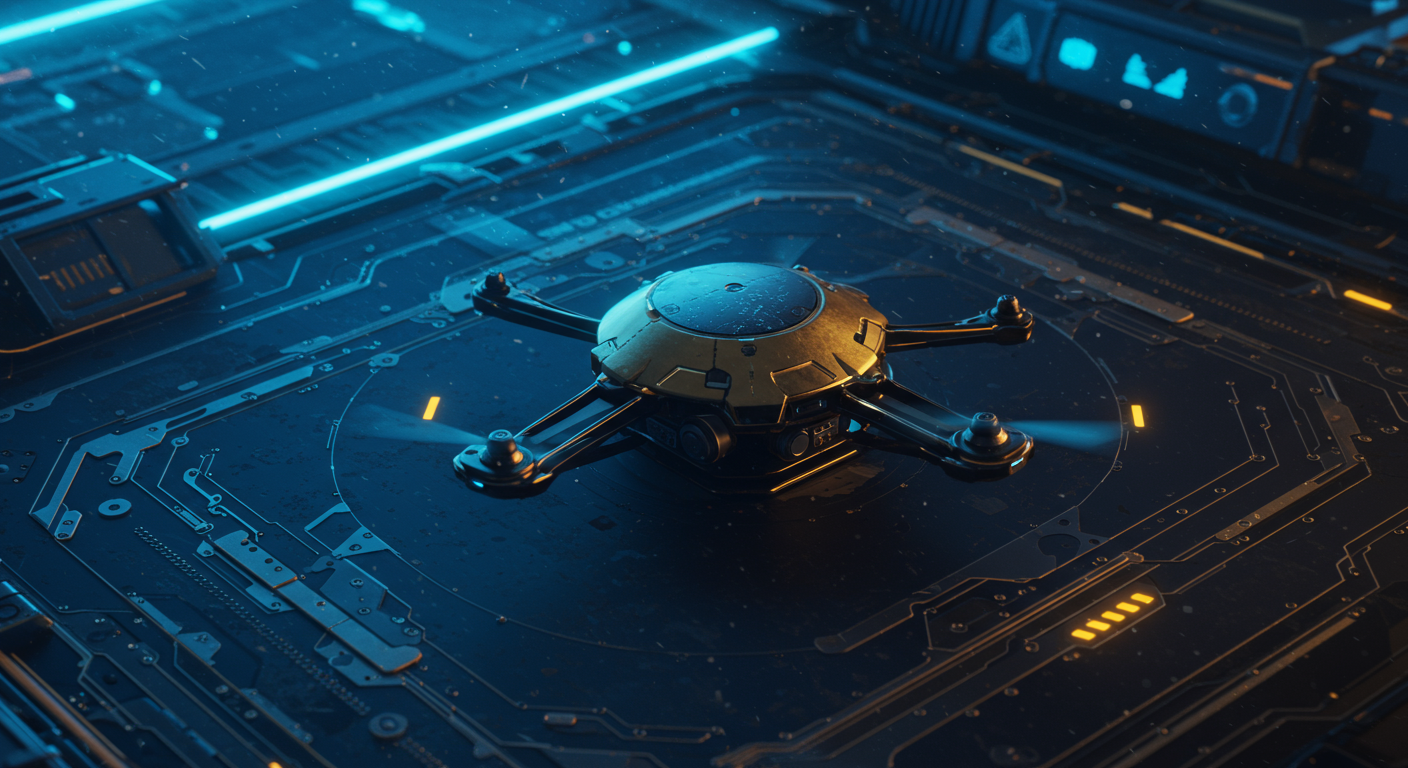
AI drone technology isn't evolving in isolation; it's deeply intertwined with other AI domains.
- Computer Vision: Drones need to "see" and interpret their surroundings, pushing the boundaries of object recognition and scene understanding. Computer Vision AI tools help drones navigate and understand the world around them.
- Machine Learning: Self-improving flight algorithms, predictive maintenance, and autonomous decision-making are powered by sophisticated machine learning techniques. The more they fly, the smarter they get.
- Robotics: AI drones are essentially flying robots, and advancements in drone tech directly benefit the broader field of robotics, particularly in areas like navigation, control systems, and sensor fusion.
Data as a Training Ground
The vast amounts of data generated by AI drones – imagery, LiDAR, sensor readings – provide a treasure trove for training other AI systems. Imagine using drone-collected data to improve autonomous vehicle navigation or enhance weather forecasting models.The Future of Work...and Beyond
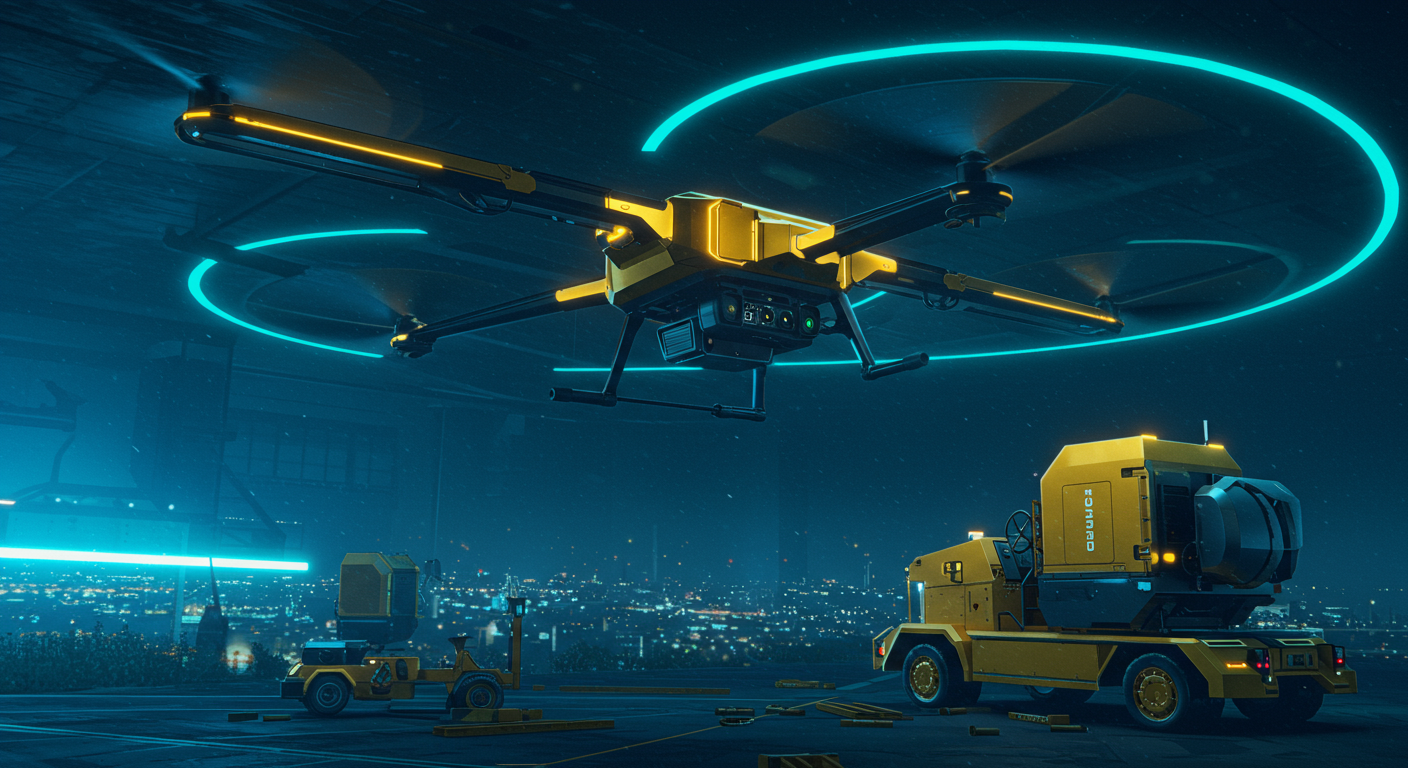
AI drones are poised to reshape industries, from agriculture and construction to security and logistics. But this transformation also raises critical questions. What new skills will be required? How do we mitigate job displacement? And how do we ensure ethical implementation as AI systems become more ubiquitous?
While tools like ChatGPT offer exciting productivity gains for content creation, AI-driven automation will reshape every industry. AI-powered Code Assistance tools are also drastically changing software development and deployment workflows. It will be a transformation, for sure!
Investing in the Future: The Economic and Strategic Implications of AI Drone Dominance
The convergence of AI and drone technology is not merely futuristic fantasy; it's a rapidly materializing reality with profound economic and strategic consequences.
Economic Opportunities and Challenges
The economic impact of AI drone industry is multi-faceted. Investment flows toward AI drone development, creating a ripple effect across industries:
- Job creation: From manufacturing and software development to maintenance and operation.
- New Industries: Entirely new sectors emerge, focusing on AI drone applications in agriculture, delivery, security, and environmental monitoring.
- Increased Productivity: AI drones can automate tasks, reducing labor costs and increasing efficiency, mirroring how productivity tools like Taskmagic automate workflows.
- Initial Investment Costs: The upfront costs of research, development, and deployment can be substantial.
- Job Displacement: Automation may lead to job losses in certain sectors as AI drones replace human workers.
Strategic Importance and Global Competitiveness
AI drone technology is swiftly becoming a cornerstone of national security and global competitiveness. Governments and private investors are pouring resources into AI drone innovation. Consider the following:
- Enhanced Surveillance: AI-powered drones provide real-time intelligence gathering capabilities, bolstering national security.
- Autonomous Warfare: Drones with AI can execute missions without human intervention, raising ethical questions but also increasing efficiency.
- Geopolitical Implications: The proliferation of AI drones shifts the global balance of power, as nations vie for technological supremacy. You can research leading companies in the field to keep abreast of these developments, similar to how market analysis is done with Browse AI.
Government and Private Sector Investment
Government funding and private investment are critical drivers of AI drone innovation. Venture capitalists are eager to back promising startups. Strategic partnerships are forming between tech companies and defense contractors. The long-term impact on the global balance of power will be determined by which nations and companies lead this technological revolution.
Keywords
AI drone technology, American drone industry, Anduril Industries, AI defense systems, drone warfare ethics, AI safety and regulation, national security AI, autonomous drones, AI doomerism, future of AI, AI impact society, defense tech innovation, AI powered drones, drone technology trends
Hashtags
#AIDroneTech #DroneInnovation #AIinDefense #TechEthicsAI #FutureofDrones
Recommended AI tools
ChatGPT
Conversational AI
AI research, productivity, and conversation—smarter thinking, deeper insights.
Sora
Video Generation
Create stunning, realistic videos and audio from text, images, or video—remix and collaborate with Sora, OpenAI’s advanced generative video app.
Google Gemini
Conversational AI
Your everyday Google AI assistant for creativity, research, and productivity
Perplexity
Search & Discovery
Clear answers from reliable sources, powered by AI.
DeepSeek
Conversational AI
Efficient open-weight AI models for advanced reasoning and research
Freepik AI Image Generator
Image Generation
Generate on-brand AI images from text, sketches, or photos—fast, realistic, and ready for commercial use.
About the Author

Written by
Dr. William Bobos
Dr. William Bobos (known as 'Dr. Bob') is a long-time AI expert focused on practical evaluations of AI tools and frameworks. He frequently tests new releases, reads academic papers, and tracks industry news to translate breakthroughs into real-world use. At Best AI Tools, he curates clear, actionable insights for builders, researchers, and decision-makers.
More from Dr.